Do you have elderly parents or retired friends who love to cook?
A cluttered kitchen and disorganized can easily become a hazard, where accidents can happen.
Here are 11 simple steps to ensure that your kitchen is safe, tidy, and senior-friendly.
Setting up a senior-friendly kitchen ensures that cooking and meal prep remain a joyful experience, no matter the age of the chef!
1. Keep Everyday Kitchen Items Within Easy Reach for Seniors
One of the most important things to consider when setting up a senior-friendly kitchen is accessibility.
Store frequently used items like pots, pans, utensils, and dishes at waist height to avoid unnecessary bending or reaching. Use lower shelves or pull-out drawers so everything is within easy arm’s reach.
Invest in storage solutions like Lazy Susans or sliding shelves to maximize convenience.
credit Instagram @martinmooredesign
2. Pick Simple, Senior-Friendly Kitchen Appliances
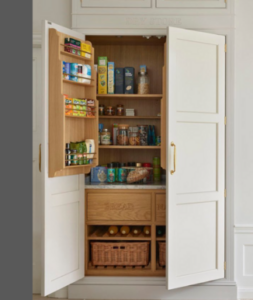
Look for appliances that are designed with seniors in mind. Choose stovetops with knobs that are easy to turn, or opt for touch controls for a more user-friendly experience.
Microwaves with large, clearly labeled buttons or easy-to-read displays are also a great option.
Consider investing in a toaster oven with auto-shutoff features or an electric kettle that automatically shuts off once the water boils, preventing potential accidents.
Learn more about my favourite options in Kitchen Appliances for the Elderly.
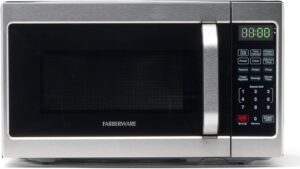
3. Make Sure Your Kitchen Has Bright, Safe Lighting
Proper lighting is key to a safe and comfortable kitchen environment.
Good lighting in the kitchen can lower the risk of falls among seniors by up to 60%, making daily tasks safer.
Install bright, energy-efficient lights under cabinets to illuminate work surfaces. Consider adding motion sensor lights that automatically turn on when you enter the kitchen.
Additionally, focus on the areas where food prep happens the most – like countertops and cutting boards.
Adequate lighting will reduce the risk of accidents and make it easier to see what you’re doing.
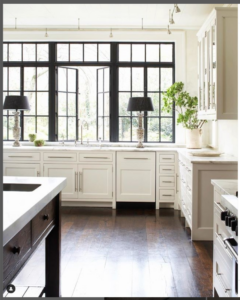
Credit Instagram @morgancreekcabinetco
4. Use Non-Slip Mats to Prevent Falls in the Kitchen
Slips and falls are a major concern for seniors, and a slippery floor can be a real hazard.
Choose non-slip flooring materials like rubber, cork, or textured vinyl, which provide traction and prevent accidents. If you already have a slippery floor, consider adding non-slip rugs in high-risk areas, such as near the sink or stove. Just make sure the rugs are firmly secured to avoid tripping hazards.
Using non-slip mats in key kitchen areas helps prevent slips and falls, reducing injuries by about half.
5. Try Helpful Kitchen Gadgets Designed for Seniors
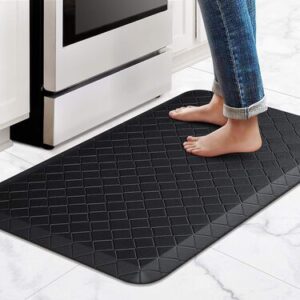
There are many helpful kitchen tools that make cooking easier and safer for seniors.
Look for knives with ergonomic handles, jar openers, and peelers that provide a firm grip, reducing strain on the hands and wrists.
You can also find cutting boards with suction cups to keep them stable while chopping, or utensils with larger, more comfortable grips.
These small changes can make a big difference when preparing meals. Research shows that the use of adaptive kitchen tools can lead to a 50% reduction in disability rates among seniors.

6. Add Grab Bars and Safety Handles Where Needed
Install grab bars near the stove, sink, and in cabinets to provide support when standing or reaching for items.
These can offer extra stability and help reduce the risk of falls. Ensure that handles on cabinets and drawers are large and easy to grip.
Opt for lever-style handles, which are much easier for seniors to use than traditional knobs. You can even add pull-down racks to hang towels or utensils within easy reach.
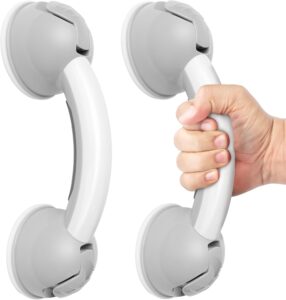
7. Declutter and Organize to Create a Safer Space
Clutter in the kitchen not only makes it harder to find what you need, but it also increases the risk of accidents.
Keep countertops clear by storing small appliances in cabinets and organizing pantry items in easy-to-reach bins.
Group similar items together so that you can find them quickly.
Labeling containers and shelves also helps you stay organized, especially for seniors with memory concerns.
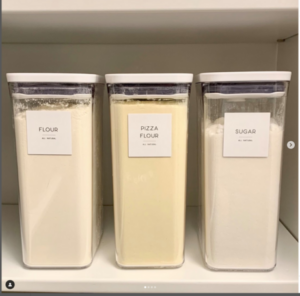
Credit Instagram @simply.done.organizing
8. Use Large, Clear Labels for Easier Reading
We all know that sadly, vision tends to decline with age! So, it’s important to make labels clear and legible.
Use large, bold fonts or high-contrast labels on food containers, spice jars, and pantry items. Color-coded labels or even picture labels can also be helpful for seniors with poor eyesight.
You can also label the shelves and drawers so that finding items becomes a breeze. This step will reduce frustration and make the kitchen feel more organized.
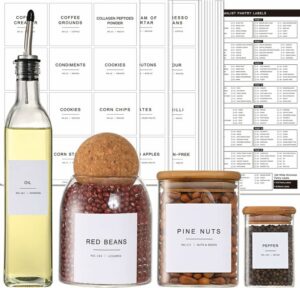
9. Adjust Counter and Surface Heights for Comfort
When setting up a kitchen for seniors, the height of work surfaces matters. Make sure that counters, sinks, and tables are at a comfortable height to avoid bending over or reaching up.
If the countertops are too high or too low, consider getting a height-adjustable table or a countertop extender. Even something as simple as a comfortable chair in the kitchen for sitting down during food prep can help reduce strain and fatigue.
Counters adjusted to the right height reduce bending and strain, making kitchen tasks easier for seniors.
Want appliances that are both safe and kind to your wallet? Read Energy‑Efficient Appliances That Save Money for Seniors.
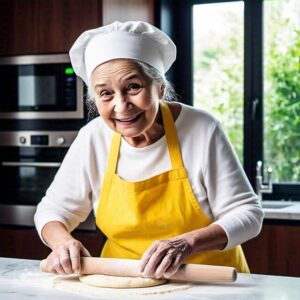
10. Add Hands-Free Features Like Faucets and Trash Cans
For seniors with limited mobility or dexterity, hands-free options can make a world of difference.
Consider installing a faucet with motion-sensing technology, so you don’t need to touch the handle when washing hands or rinsing dishes.
Voice-activated smart assistants can also control lights, timers, and even some kitchen appliances, eliminating the need for physical interaction with buttons or knobs.
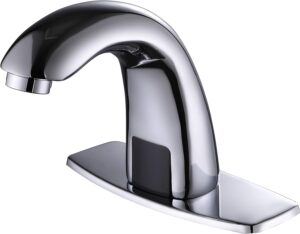
11. Keep Emergency Supplies in a Safe, Easy-to-Reach Spot
In addition to regular kitchen items, it’s important to keep emergency supplies in easy-to-access spots.
Store items like a first-aid kit, medications, a flashlight, and a fire extinguisher in designated areas that are clearly labeled.
If there is a medical emergency or a power outage, having these essentials within reach can be vital. Store these items in cabinets at an accessible height, ensuring that they are easy to retrieve if needed.
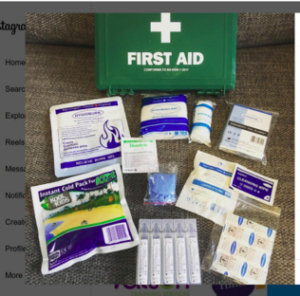
Credit instagram @andersson_first_aid_training
Frequently Asked Questions
1. What makes a kitchen senior-friendly?
A senior-friendly kitchen is designed for safety, accessibility, and comfort. It includes features like easy-to-reach storage, slip-resistant flooring, bright lighting, ergonomic gadgets, and user-friendly appliances.
2. How can I make my elderly parent's kitchen safer?
Start by decluttering countertops, installing grab bars, using non-slip mats, and keeping frequently used items within arm’s reach. Bright lighting and adaptive kitchen tools can also reduce the risk of falls and accidents.
3. Which appliances are best for seniors?
Senior-friendly kitchen appliances include microwaves with large buttons, stovetops with easy-turn knobs, auto shut-off kettles, and toaster ovens with safety features. Look for simple, intuitive controls and safety-focused designs.
4. Are there special kitchen tools for elderly people with arthritis?
Yes! Adaptive tools like jar openers, non-slip cutting boards, utensils with large grips, and peelers with ergonomic handles are ideal for seniors with limited hand strength or arthritis.
5. Why is good lighting important in a senior’s kitchen?
Proper lighting reduces the risk of slips and mistakes by improving visibility. Under-cabinet lighting, motion-sensor lights, and well-lit prep areas help seniors cook safely and confidently.
6. What flooring is safest for elderly people in the kitchen?
Non-slip flooring materials such as cork, rubber, or textured vinyl provide better traction. You can also use anti-fatigue mats or non-slip rugs that stay securely in place.
7. How can I help seniors stay organized in the kitchen?
Use labeled storage containers, group similar items together, and install pull-out shelves or Lazy Susans. Clear, bold labels and color-coded systems help seniors find what they need quickly.
8. Is it worth adding hands-free gadgets in the kitchen?
Absolutely. Touchless faucets, voice-activated assistants, and motion-sensor trash cans help seniors with mobility or dexterity challenges navigate the kitchen more independently.
9. What are essential emergency supplies for a senior’s kitchen?
Keep a first-aid kit, flashlight, medications, and fire extinguisher in easily accessible, clearly labeled spots. Store them at waist height to avoid the need to bend or reach.
10. How can countertop height affect seniors in the kitchen?
Incorrect counter height can cause discomfort or strain. Adjustable-height tables or stools can make food prep easier and more comfortable for elderly individuals.
Want to make cooking easier, fun, and safer as you age? Check out my Kitchen Safety for Seniors

Written by Appliance Granny Madlyn is a tech-savvy senior with 30+ years of experience running an IT business. She combines her love of cooking and family with a mission to make kitchens safer, simpler, and more joyful for seniors.
Hello There!

Hi, I’m Madlyn — better known here as Appliance Granny!
I’m an almost-retired, tech-savvy grandmother who ran an IT business for 30+ years. I love family, good food, and any gadget with an On–Off switch. I also know first-hand how kitchens can get tricky as we age: heavy pots, hot handles, tiny buttons, confusing settings.
My goal is simple:
Help seniors create safer, smarter, more joyful kitchens.
On this site you’ll find practical tips, step-by-step guides, and senior-friendly product picks—always written from lived experience, clear research, and a friendly Granny voice.
